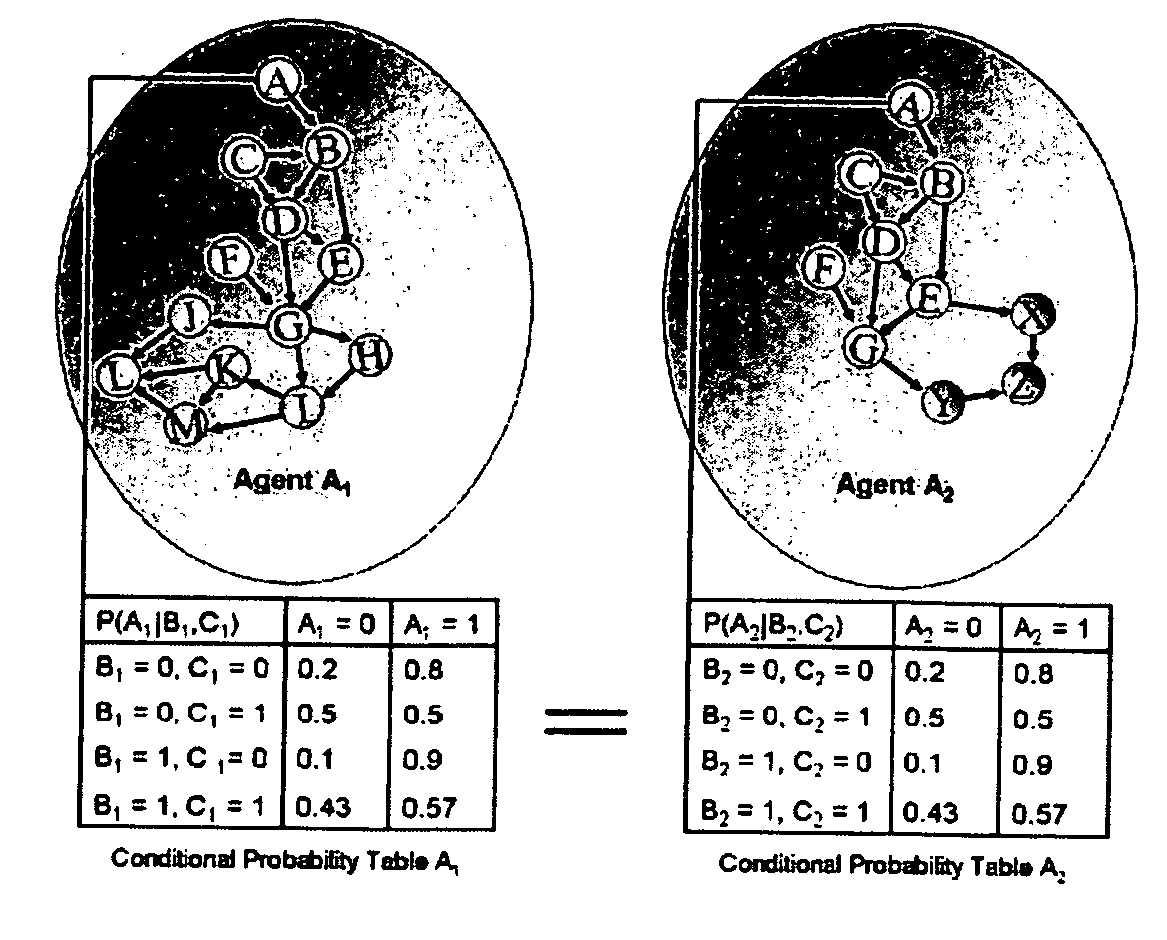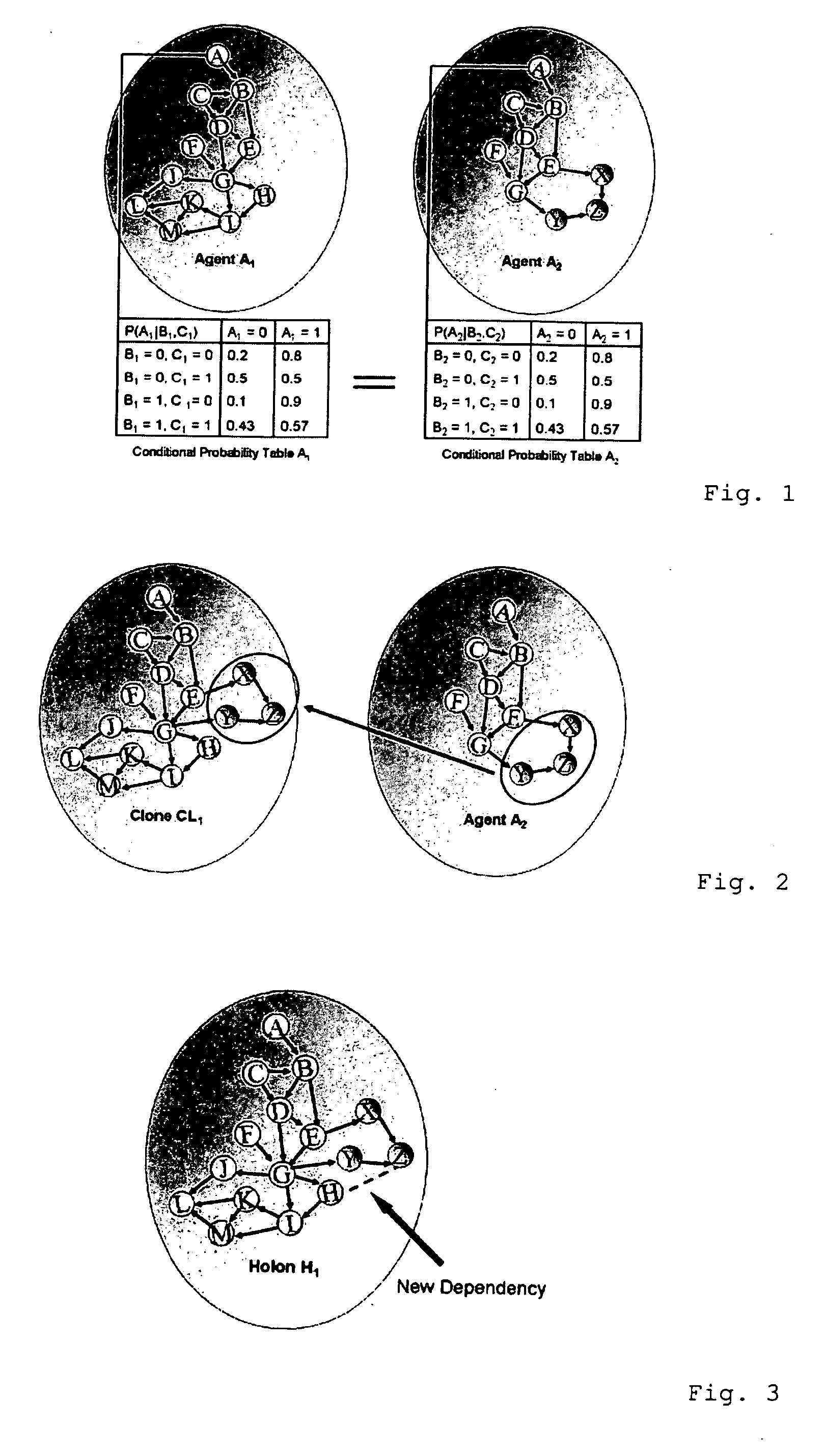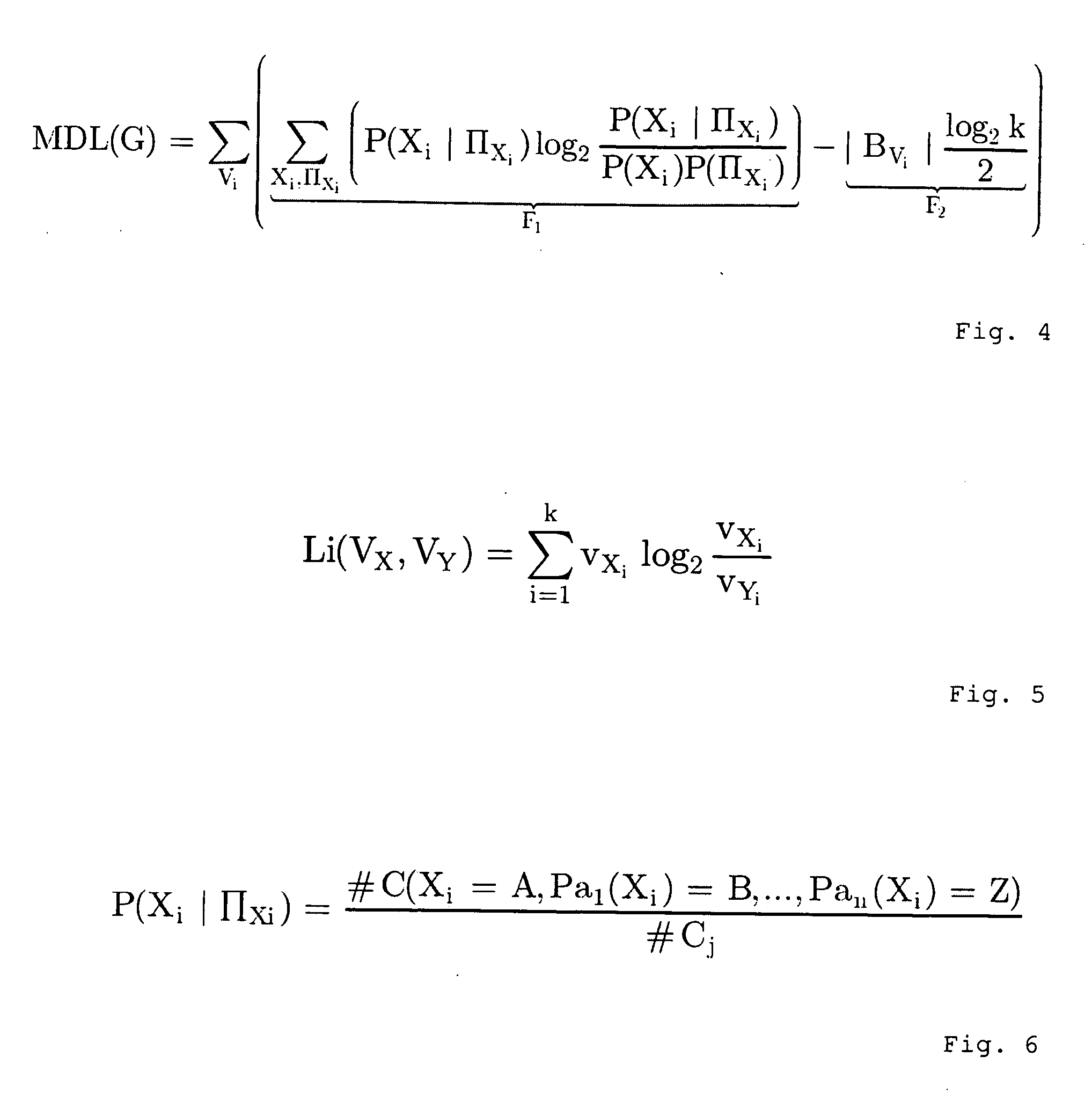Method and device for the simulation of non-linear dependencies between physical entities and influence factors measured with sensors on the basis of a micro-simulation approach using probabilistic networks embedded in objects
a probabilistic network and non-linear dependency technology, applied in the field of computer assisted simulation and system control, can solve the problems of affecting usability and efficiency, and not being able to pursue a micro-simulation approach
- Summary
- Abstract
- Description
- Claims
- Application Information
AI Technical Summary
Benefits of technology
Problems solved by technology
Method used
Image
Examples
Embodiment Construction
[0036] A simple approach to simulate and forecast the overall behavior of a system consisting of entities would be to learn about the system and its entities from data and to generate a huge probabilistic network (macro-network) in which the entities, as well as all of the influence factors are represented as nodes and in which all of the dependencies between the nodes are contained as conditional probability tables (CPT). The result would be a network with hundreds of thousands of nodes which would be unmanageable due to its complexity. To nevertheless carry out a simulation und prognosis of the global behavior in such systems, the method invented can be used.
[0037] In order to obtain comprehensive protection a process will be described in the following which as a possible embodiment consists of one or several of the following steps of which some can be also executed in different sequences: [0038] Measurement / extraction of raw data resp. information about real entities. [0039] Ide...
PUM
 Login to View More
Login to View More Abstract
Description
Claims
Application Information
 Login to View More
Login to View More - R&D
- Intellectual Property
- Life Sciences
- Materials
- Tech Scout
- Unparalleled Data Quality
- Higher Quality Content
- 60% Fewer Hallucinations
Browse by: Latest US Patents, China's latest patents, Technical Efficacy Thesaurus, Application Domain, Technology Topic, Popular Technical Reports.
© 2025 PatSnap. All rights reserved.Legal|Privacy policy|Modern Slavery Act Transparency Statement|Sitemap|About US| Contact US: help@patsnap.com



